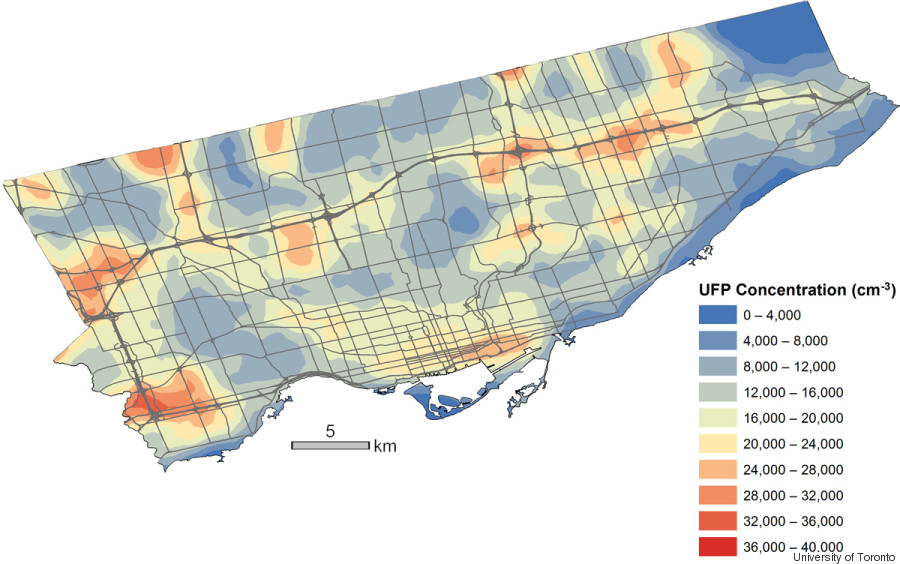I am following up the discussion from the Valhalla Town Square thread to here.
In respect to the air quality map posted above, you said that (if I got this correct) that the best means of improving air quality over the 427 lays in expanding tree coverage in Centennial Park and Clairview Conservation Area. Should this be interpreted as saying that even if every acre of parking lot and big box store along the 427 was redeveloped to more intensive use, with a high concentration of trees planted on every site, that it would have only negligible impacts on air quality in the area?
I suppose another interesting question brought up, is whether we (municipality) should have planning tools to mandate more trees planted on site in a redevelopment to serve a particular planning purpose (some purposes could be improving local air quality, reducing run-off, reducing local heat island effect). However, I am getting an impression that such benefits would only be negligible?
I am following up the discussion from the Valhalla Town Square thread to here.
In respect to the air quality map posted above, you said that (if I got this correct) that the best means of improving air quality over the 427 lays in expanding tree coverage in Centennial Park and Clairview Conservation Area. Should this be interpreted as saying that even if every acre of parking lot and big box store along the 427 was redeveloped to more intensive use, with a high concentration of trees planted on every site, that it would have only negligible impacts on air quality in the area?
I suppose another interesting question brought up, is whether we (municipality) should have planning tools to mandate more trees planted on site in a redevelopment to serve a particular planning purpose (some purposes could be improving local air quality, reducing run-off, reducing local heat island effect). However, I am getting an impression that such benefits would only be negligible?
Hmmm, I wouldn't say negligible.
Here's what I would say. To offset the kind of pollution a major highway corridor currently generates is not something resolved by 10 trees or 100 trees or 1000 trees.
Of course each number of trees can contribute to a greater whole.
But if you're looking for an impactful, timely result, expecting that from redevelopment of any one private land holding is unlikely (though not impossible).
The Sherway Gardens site is large enough to be impactful if you make 1/2 of it forest.
But doing so outright (removing development) is both improbable and expensive).
The question then becomes what can you achieve?
That obviously depends on the size of any one site, but also on what you want to do with it and at what cost.
Let's go back to Sherway. If all the parking were topped by a 'green roof' you could achieve wonders, providing that roof supported full-sized trees.
But that's a lot of expensive engineering, relative to retaining only parking spaces.
If you slap down condos and simply set aside a 10 or even 20m buffer to the highway, no that won't make an exciting difference.
Its not that it will do nothing, but I have my doubts that you could measure the impact on air quality with any but the most sensitive equipment.
That then leaves the question of how you might address that?
If every condo or mall goes green roof, engineered to handle large trees, that would add up.
But the economics may be challenging.
The issue in the short-term is critical mass planting, especially in economically favourable ways.
Longer term, you have to consider moving new ideas into the Green Standard, in respect of air quality, first voluntary, ultimately mandatory.
***
A truly massive difference? Deck over the highway with green-roof deck and plant trees, vent the particulate matter through low-grade filters (removing the worst of the pollution) then let it vent into and above the new tree line.
But this is not a cheap proposal.
One needs to consider balancing different ideas such as major investments in public transport that would allow a narrower R.O.W. as well as mandates for cleaner cars/trucks.
One could consider building over the ROW of the highway, instead of beside it, and using the adjacent land as the green filter.
Lots of options. Limited only by ambition and dollars.






